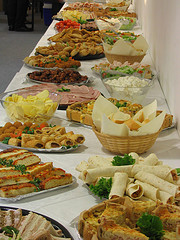Barefoot running wasn’t the only change I made in my lifestyle 11 months ago. As I embarked into the adventure of running barefoot, I started another experiment. Why confuse the body one way, when you can torture it two ways right? I went cold turkey on dairy, eggs and meat (I still eat fish sparingly to get my vitamin B12) the same day I decided I was going to run. I also started paying close attention to processed food and stopped eating anything with an ingredient list that resembled a sushi menu. But eating healthy is not just about what you eat, it’s also how much you eat. Hence the term 80% full.
Hara Hachi Bu or 80% full

Turns out they are the only human population to have a self-imposed habit of calorie restriction. Along with high life expectancy, these islanders are also noted for their low mortality from cardiovascular disease and certain types of cancers. Willcox2 (2007) compared age-adjusted mortality of Okinawans versus Americans and found that, during 1995, an average Okinawan was 8 times less likely to die from coronary heart disease, 7 times less likely to die from prostate cancer, 6.5 times less likely to die from breast cancer, and 2.5 times less likely to die from colon cancer than an average American of the same age. Now that’s saying something.
80% full just takes a little practice

Photo by dragontomato
Reading about this and putting this to practice were two very different things for me. For one, the biofeedback between my stomach and my brain is so slow that by the time my brain tells me I’m full, I’m already stuffed. This was the most difficult thing for me to unlearn. However, until I could teach my body to tell my brain that it was full, I started to use visual cues to figure out how much I should eat.
- Grande burrito? Eat the first half and take the other home.
- Awesome buffet? Don’t go back for the second helping.
- Half size orders in restaurants? Order that instead.
- Loosening your belt? Might be too late already! 🙂
The most effective technique for me was to ask myself: If I ate this, can I break into a 10-mile run right after? If you’ve ever tried running after wolfing down a double-double, you’ll know what I mean. All that sloshing around inside makes it incredibly uncomfortable to run. Eating healthy and running is a wonderful virtuous cycle. I’ve lost 20 pounds since the start of the year and it seems to have stayed off. I’ve come to re-appreciate what an amazing thing the human body is. In the technology-centric world that we all live in there’s so much emphasis on the brain (math and science) that we don’t pay attention to our body until it’s too late. There’s even an evolutionary theory that claims our brains got to that size because of running!
So this thanksgiving, stuff the turkey, not your stomach! What do you do for eating healthy?
[sc:follow_me]